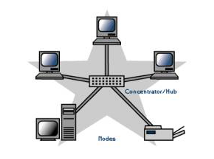A set of rules is needed for any means
of communication:
- Human intercommunication (in pairs or larger groups) requires rules of conversation (do not speak if someone else is speaking) to function effectively.
- Computers are no different. Consider the following simplistic analogy:
- Two computers connected via a single connection -- Imagine two people talking via two tin cans connected via piece of string:If the two people talk at the same time then we get what is known (in networking terms) as data collision.
- Therefore, we need regulations and rules to how we communicate over a computer network. For example to remote login (telnet), FTP or email.
- The set of rules and regulations is called a Protocol.


